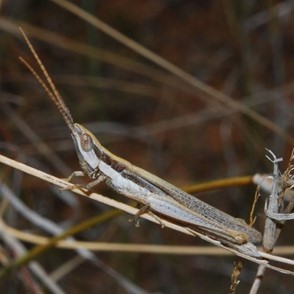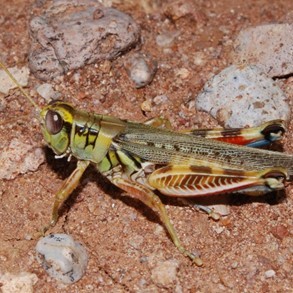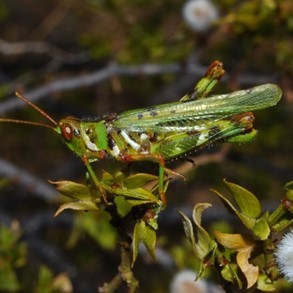Objective:
We monitor grasshopper (Orthoptera: Acrididae) species composition and abundance in four core ecosystem types: Chihuahuan Desert grassland, Plains grassland, Chihuahuan Desert creosotebush shrubland, and piñon-juniper woodland. Grasshoppers are counted in early summer and in late summer to include seasonal specialist species. Coupled with long-term core site data on plant species composition, aboveground plant biomass, and meteorology, the grasshopper data provide information on relationships between consumers and changes in climate and vegetation.
Novelty:
To our knowledge, this study is unique in the world in providing long-term (>10 years) seasonal data on grasshopper communities from multiple dryland ecosystems at species-level resolution. Our data yield information on the grasshopper species predicted to be winners or losers under climate change and with predicted shifts in plant species composition and ecosystem state transitions.
Design:
Grasshoppers are counted on six 50 m × 1m transects around the perimeters of five 200m diameter rodent trapping webs at each of the LTER core monitoring sites: Chihuahuan Desert grassland (since 1992), Plains grassland (since 2001), Desert creosotebush shrubland (1992), and Piñon-juniper woodland at Goat Draw (1992-2000). The 5 webs per ecosystem site provide independent units of replication within each ecosystem type, and each of 6 transects (50m X 1m) per web are nested subsamples. The Goat Draw site was replaced by the Blue Grama Grassland Site in 2001 when the Sevilleta LTER program made that site change. This study was initiated in 1992, and is ongoing to the present time.
Responses:
Data recorded for each individual grasshopper observed per transect: species, sex, age class, and the substrate from which each grasshopper was flushed. Grasshopper count data are collected over a 2-day sampling period, twice each year, during early summer or late summer. Visual counts of all grasshoppers on each 50 square meter strip transect are made by the observer (D.C. Lightfoot, for consistency) who slowly walks each transect, flushing grasshoppers ahead with a one-meter long – 1-inch diameter, white PVC pipe. The observer records data on to a voice-activated micro-cassette recorder, and then transcribes the audio data into digital spreadsheet format.
Supporting Documents:
Long-Term Core Site Grasshopper Dynamics for the Sevilleta National Wildlife Refuge, New Mexico. https://portal.edirepository.org/nis/mapbrowse?scope=knb-lter-sev&identifier=106




